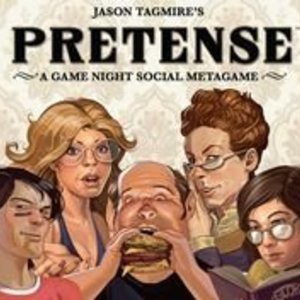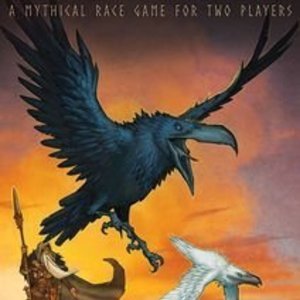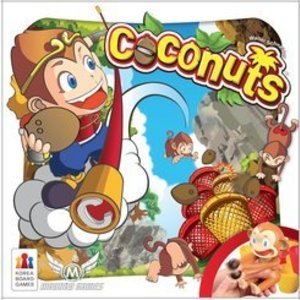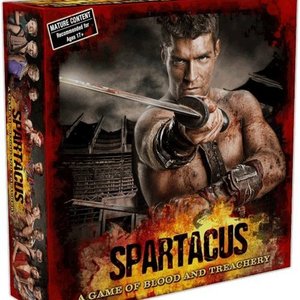
Roll for the Galaxy
Tabletop Game
Roll for the Galaxy is a dice game of building space empires for 2-5 players. Your dice represent...

Marvel's Spider-Man
Video Game Watch
Sony Interactive Entertainment, Insomniac Games, and Marvel have teamed up to create a brand-new and...
Open-World Adventure Single-Player Third-Person
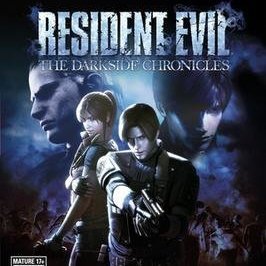
Resident Evil: The Darkside Chronicles
Video Game
The game's plot revolves around the personal stories and tragedies in the series. Its main focus is...
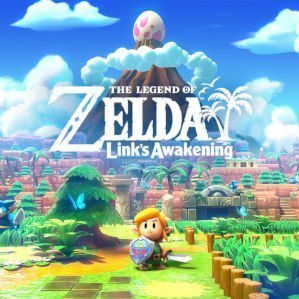
The Legend of Zelda: Link's Awakening (Remake)
Video Game Watch
The Legend of Zelda: Link's Awakening[a] is an upcoming action-adventure game developed and...
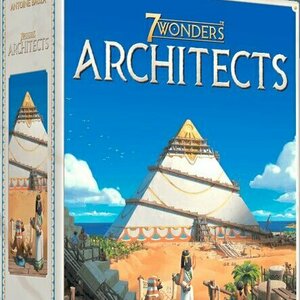
7 Wonders: Architects
Tabletop Game
In 7 Wonders: Architects, 2-7 players race to become a leader of the ancient world by completing an...
Purple Phoenix Games (2266 KP) rated Odin's Ravens (second edition) in Tabletop Games
Sep 8, 2021
Odin’s Ravens is a light game of strategy and hand management in which 2 players are racing to be the first of Odin’s ravens (duh) to travel around the world. To setup the game, shuffle the land cards and place a line of 16 cards directly between the two players. Land cards are divided into two halves, each depicting a different landscape. This line of Land cards acts as the route around the world for both Ravens. Players choose one end to be the start/finish lines, and place their Raven meeple on their corresponding side of the starting Land card. During play, the Ravens will travel down their side of the Land cards, and will switch to the opponent’s side for the flight back to the finish. Each player receives a set of 25 Flight cards and 8 Loki cards, to be shuffled and kept separate from each other. Both players then draws 5 cards into their hand, in any combination of Flight and Loki cards. Choose a starting player, and the game is ready to begin!
On a typical game turn, you will play as many cards from your hand as you want, either Flight cards, Loki cards, or combinations of the two. Flight cards allow you to move your raven down the path. In order to move your raven, you must play a Flight card that matches the landscape of the next Land card on your path. (Ex. if the next space is a Forest, you must play a Forest Flight card). If you have no Flight cards in hand that match the next card on your path, then you may discard any two flight cards of the same type to move forward one space. Loki cards allow you to perform Trickery actions, which alter the flight paths of both players. Some actions include rotating Land cards, moving ravens forward/backward a number of spaces, swapping Land cards, etc. It is important to note that once a Loki card has been played, it is removed from the game entirely – you only have 8 Loki cards total, so use them wisely! After you have played all the cards you wish on your turn, you will then draw 3 cards (in any combination of Flight/Loki cards), and end your turn. You may never have more than 7 cards in hand. Play continues in this fashion until one player has reached the end of their flight path – resulting in victory!
Seems simple enough, right? Well, it is and it isn’t. The overall gameplay itself is simplistic – draw and play cards to move your raven towards victory. The implementation of Loki cards adds a strategic twist to the game that keeps each player on their toes. Flight cards alone leave you at the mercy of the luck of the draw, but Loki cards give players a little more control over their game strategy. They provide ways to alter the flight path to benefit yourself or inhibit your opponent at various points throughout the game. Add in the fact that each player only has 8 Loki cards total, and that ups the strategy as well . You only have a finite amount of trickery to pull, so you have to be sure to use it at the perfect time. Was your opponent able to counteract your attempted trickery, or did you execute it perfectly for them to fall into your trap?
The components of this game are pretty standard and straightforward. The cards are good quality and are easy to manipulate, and the wooden raven meeples are big and chunky. Nice and simple! The artwork of the game, although clear and effective, is pretty basic and leaves much to be desired. It is clear in the way that it is easy to identify each type of landscape and determine the actions of Loki cards, but overall it feels a little too simplistic and not as immersive as it could be.
Odin’s Ravens is a decent 2-player game, although not my favorite. If I needed something simple, light, and relatively fast for 2 players, it is definitely one that I would pull off the shelf. But I have other 2-player games that I would rather play instead. Will it stay in my collection forever? Hard to say, but for the time being it has a spot on my shelves. If you are looking for something that is relatively simple, but has opportunities for strategy, check out Odin’s Ravens. Purple Phoenix Games gives this one a flighty 13 / 18 – you just gotta keep your eye on that Loki…
Purple Phoenix Games (2266 KP) rated Coconuts in Tabletop Games
Jun 12, 2019
You’re a monkey trying to throw coconuts into cups.
This is not a very theme-heavy role-playing game where you need to get into the heads of the characters and base your actions on what they would do. Instead, you are grabbing a monkey shooter action figure, placing a rubber Milk Dud (not a sponsor) in its hands and making the figure fling said forbidden delicious treat into yellow and red plastic cups. Should you make a basket into a yellow cup, you take that cup and place it in front of you in a vertical bowling pin assembly. Make a red cup shot and you not only get the cup to add to your collection, but you take another turn. The first player to amass six cups in front of them is the winner!
This sounds so stupid. Why am I reviewing this?? This is a kid’s “game.” You are right. This is incredibly childish. But it’s also INCREDIBLY fun. Have you read our review of Happy Salmon? This fills a similar role in that you break this bad boy out when you need a mental break between heavier games, or when you want the children to be involved in your game night. There is no real thinking involved. Player interaction? Sure. Some. Whether you choose to shoot your coconuts into the middle area of unclaimed cups, or into your opponents’ collections and take their hard-earned cups is up to you (I approve and encourage this cutthroat behavior).
Let’s go back to the children playing this with you thought. The box says ages 6+. I wholeheartedly disagree, but it may just be my situation. I have played this with my 2-year-old son and he had an absolute blast just flinging the coconuts everywhere while we adults were trying to play the game correctly. But the final score doesn’t matter. In a game like this I rarely care about winning or losing. My kid “wins” every time. It’s just plain fun to fling coconuts. I also rarely play with the included disadvantage cards to screw with my opponents because honestly, it’s hard enough to get those things in the cups.
Yes, he also shot one into my water cup so I let him score it on his mat. It’s only fair…
Components. I have good news and bad news. Good news: the monkeys, coconuts, and cups are of amazing quality. Amazing, I say! Bad news: the cards and the player mats. They are just of entry level acceptable quality. But like I said, I really don’t care much about using the cards, and the player mats are really just there to create a solid surface to put your score cups on anyway. So I’m ultimately good with that.
Now, I Kickstarted this game (as well as the Coconuts Duo project that was made for 2 player games or as a 6 player expansion for Coconuts). I got all the fancy pink and green coconuts too. They officially add nothing mechanically to the game (but you can home-brew house rules for them), but they are easier to find on the floor when you inevitably fling too far. That is, if you can find them before your dogs decide that you have given them little brown treats…
There is really not much else to say about this game except that it is super fun, takes literally 10 seconds to explain, and kids can play with you as well. We love it, and so our rating reflects that. Purple Phoenix Games gives this little game a Whopper (see what I did there?) of 18 / 24.
https://purplephoenixgames.wordpress.com/2019/05/07/coconuts-review/
Josh Burns (166 KP) rated Spartacus: A Game of Blood and Treachery in Tabletop Games
Jun 20, 2019
The base game is 3-4 players, there are expansions that increase that, but I'm sticking with the base game for this review. Each player controls a different House, which have their own stats, abilities, and alternate objectives, with the main objective being to reach 10 influence.
The game plays basically as follows:
Upkeep phase: collect money, try to heal wounded gladiators, and reactivate slaves that were used.
Market: A number of cards are drawn and placed face down, then one card is flipped. It could be a gladiator, a slave (can earn you money and may have abilities that are useful outside the arena) or gear for your gladiators. All players choose how many coins to bid and keep them in a closed fist until everyone is ready, then everyone reveals their bid. Whoever was highest wins. You then repeat till each card is flipped. You can also put your own cards up for auction or offer trades.
the arena: after this, 2 players chosen by another player have to either fight each other, pitting a slave or gladiator against the oppents, or forfeit at the cost of Influence. Players may place bets on who will win and if the loser will be killed, or badly injured.
The game is basically 2 games in 1: outside the arena and in it.
Outside: It is primarily about making deals, lying, setting each other up, making temporary allies and backstabbing. Literally the only rule in the actual rulebook about how to go about this is: "Don't be a dick. " It actually says that, and says they mean keep it fun, don't actually try to be a spiteful douche. There is nothing directing you when to lie or be honest, if you have to keep promises, etc.
In the arena: Combat is fun and simple. Not all fighters are equal but I have seen weak ones overcome the odds. If you're a fan of the show you will recognize many names. As a quick sidenote, an expansion can turn these fights from 1 vs 1 to 2 vs 2. I've won hard fought games, and I've lost on purpose to win a bet or fulfill a deal. Your fighter may or may not die or be injured. The player who chose the participants also decides the fate of the losing fighter (if they didn't die fighting) with a thumbs up or down. The player with the losing fighter can plead for the fighters survival or bribe, or maybe the player chosing wants the losing player to owe them a favor. There is never a clear cut choice.
In conclusion: This is a favorite of mine. It is unbelievably fun making deals (whether you keep them or not) bribing, setting players against each other etc. The combat is fun and easy to learn and the other players are typically screaming at whoever they want to win if they aren't doing well (in good fun, not actual anger). I can't think of anything to not like about it. If you like the show you'll love references such as the "Jupiter's Cock" card and seeing all the characters (slaves, gladiators, and dominas). If you don't like the show, it's still a hell of a game and you don't need to watch the show to know what's going on.
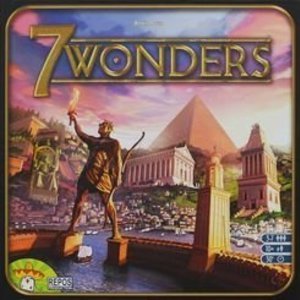
7 Wonders
Tabletop Game Watch
You are the leader of one of the 7 great cities of the Ancient World. Gather resources, develop...
BoardGames
